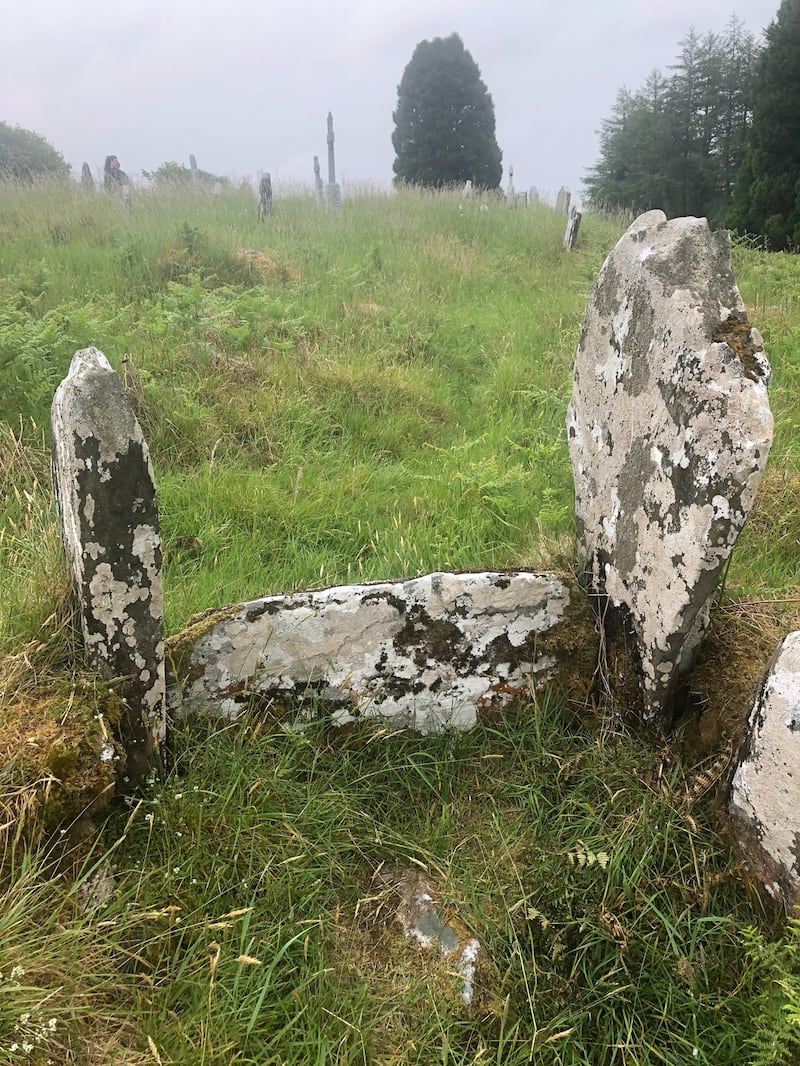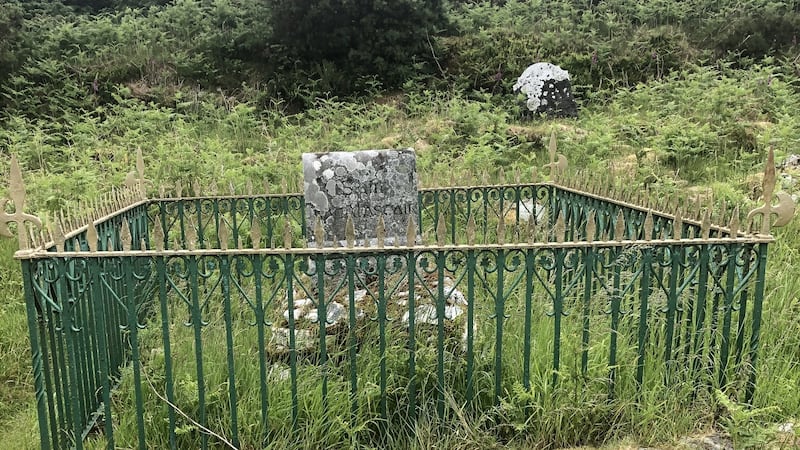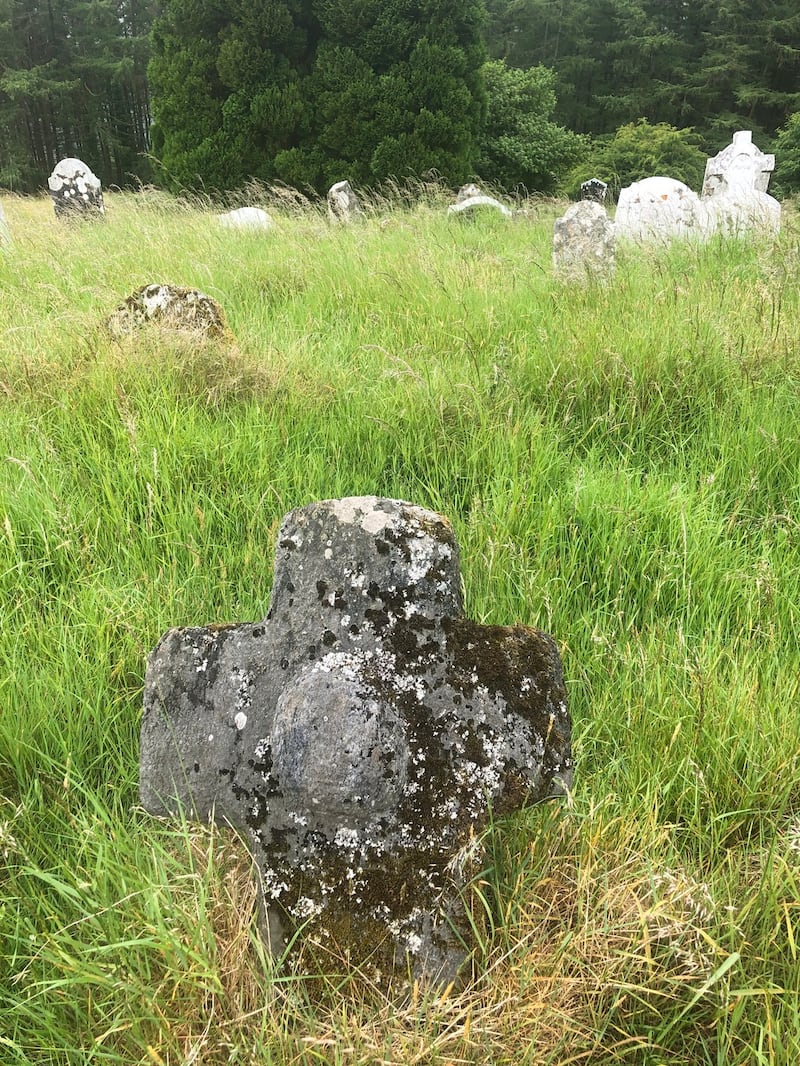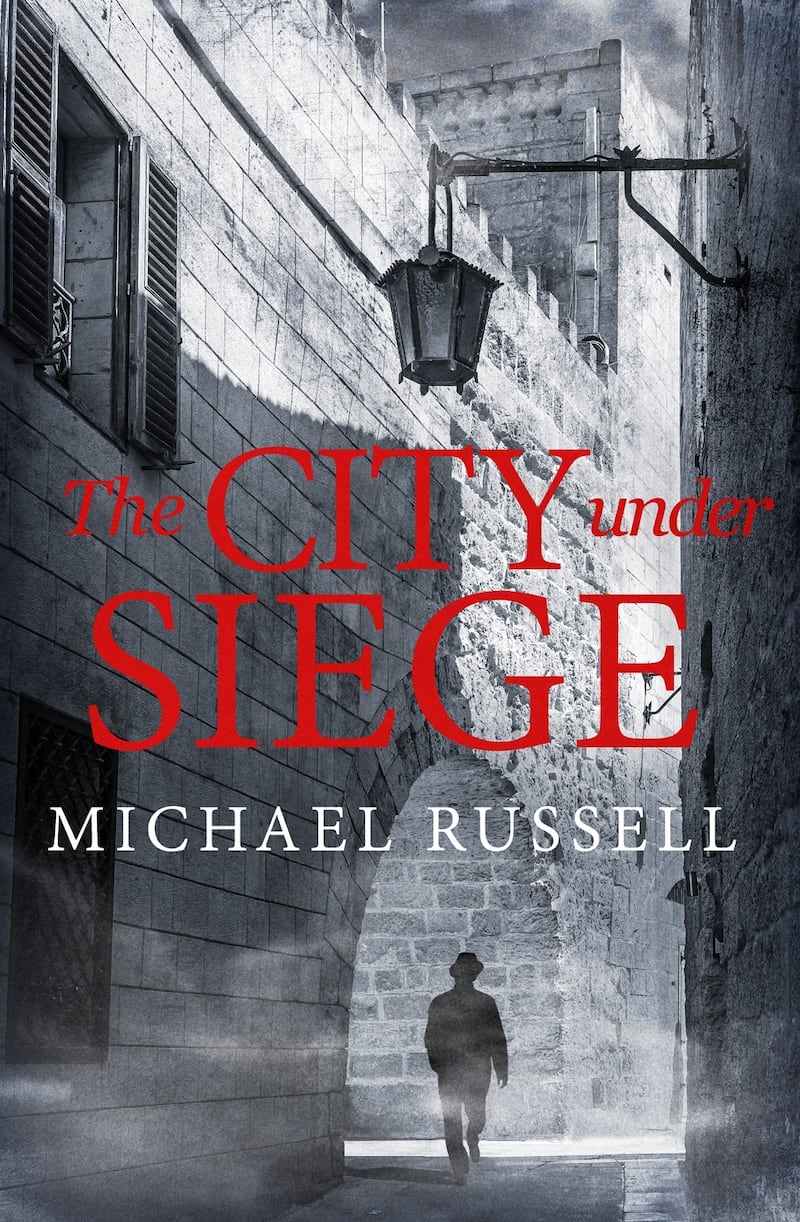I have written about Kilranelagh Hill in west Wicklow for several years, in a series of novels about an Irish policeman in the 1930s and 1940s. My detective, Stefan Gillespie, grew up in the shadow of Kilranelagh. His father’s sheep eat its thin grass. His wife is buried in the bleak, windblown cemetery on its slopes.
In my latest book, The City under Siege, Stefan attends the funeral of his son’s schoolmaster there. The graveyard is still a place where the dead are part of the living hillside. It is only one remarkable space on a remarkable mountain.
For thousands of years Kilranelagh Hill has been a burial site. At least one High King lies here. In the cemetery is a memorial to Sam McAllister, who fought beside Michael Dwyer in 1798. And there, also, lie the grandparents and great-grandparents of many of my neighbours. It is an isolated spot now, disordered and overgrown, but it is also a place of calm and quiet beauty.


Two stones stand in Kilranelagh Graveyard, as they have for thousands of years. They are called the Gates of Heaven. Those of us who live here know they mark a passage from this world to the next. No Catholic interment was complete till the coffin passed through these stones. It was a link to a pagan past, but no priest questioned it. Kilranelagh Graveyard is among the oldest continually functioning burial sites in the world, maybe the oldest in Europe.
Kilranelagh Hill itself was written about long before my detective. It is one of few locations in Ireland where you can see something that is described in an ancient saga. In the 10th century Fingál Rónáin, a tale of murder, mayhem and betrayal, there is a hunt at a place called Bae Aifi, the Cows of Aife. The story explains that these “cows” are an outcrop of white stones on a hillside.
"It is cold in the face of the biting wind
For anyone who herds the cows of Aife"
But even more ancient memories lurk there. It’s no accident that the Celtic goddess of the Boyne is Boann, probably from bó fhionn, white cow. And these things take a long time to forget. In 1655, someone scribbled on a Down Survey map, a note about “a heap of stones at White Cow Hill”. The stones are still there, white quartz, bright against Kilranelagh’s dark heather.
In another tale, Esmada Tige Buchet, the Wicklow antiquarian Liam Price identifies the home of the legendary figure Buchat, as being “on the Green of Kilranelagh”. The Green was exactly where some ancient earthworks were destroyed in the 18th century, during the building of Kilranelagh House. In the Book of Leinster, Aedh mac Ainmirech, High King, is buried on Kilranelagh Hill after the battle of Dún Bolg, probably fought at nearby Brusselstown Ring. But it is Kilranelagh that is the first place mentioned in the poem of the battle.
“I entreat the mighty Lord, the Protector of Cell Rainnearach”
And there is more. Sagas and annals weave Kilranelagh into layers of mythology and history. It was a significant place from ancient times into the Middle Ages. When Strongbow carves up the area, Kilranelagh marks an important boundary, maybe between the lawful and lawless. Centuries later, in the last stirrings of the 1798 rebellion, the fugitive Michael Dwyer finds refuge near Kilranelagh. In a 19th-century ballad he marries his sweetheart, Mary Doyle, at a priest’s house there, just escaping his enemies. The ruins still stand.


But what is most remarkable about Kilranelagh Hill is the human landscape it is part of and has helped shape for over four thousand years, long before the Celts. The hillfort near its summit, now a national monument, is one of a cluster of nine hillforts surrounding the town of Baltinglass, some, like Brusselstown Ring, on a huge scale. There is nothing like this concentration of hillforts anywhere in Ireland, Britain or Europe. The hills are littered with monuments of different ages, graves, cairns, standing stones and circles, including one on Kilranelagh, where there is also an Ogham stone. And what we can see now may be only a fraction of what was once there.
This Baltinglass Cluster is an ancient landscape comparable in scale to the Boyne Valley or the area around Stonehenge. The work of constructing these hillforts, built and rebuilt over centuries, is on a par with the pyramids. We don’t know why they’re there. They form a monumental landscape that must have had great religious, social, political and territorial significance. The marks of ancient field systems and hut circles suggest a high population at some periods.
Archaeologists are also beginning to discover that aspects of the landscape may relate to solstices and other astronomical features. It is an environment so unique that it seems destined to become a World Heritage Site, yet it remains a hidden treasure, even within Ireland. It is almost unspoiled.
To look out from Kilranelagh Hill, eyes half-closed, is to see almost what the people who built these hillforts saw. It is almost to feel you could turn your head and hear their voices. And when you stand there, your only company may be a buzzard sailing overhead. The only sound may be the haunting scream of a peregrine, or the call of one of the rare curlews that still nest on the mountain.
To walk from Kilranelagh to the other hillforts that look down on Baltinglass and the Slaney, is to inhabit a unique space, in which you not only touch the deep past of Ireland’s Ancient East, but experience something as unique and inspiring in the extraordinarily beautiful views of Ireland’s present.
There are no trips or tours to bring you here. It might take some detective work! Climbing Kilranelagh and its neighbours is still something of an adventure. There aren't too many of those left, an hour and a bit from Dublin.
The City Under Siege by Michael Russell is published by Constable in trade paperback/eBook



















